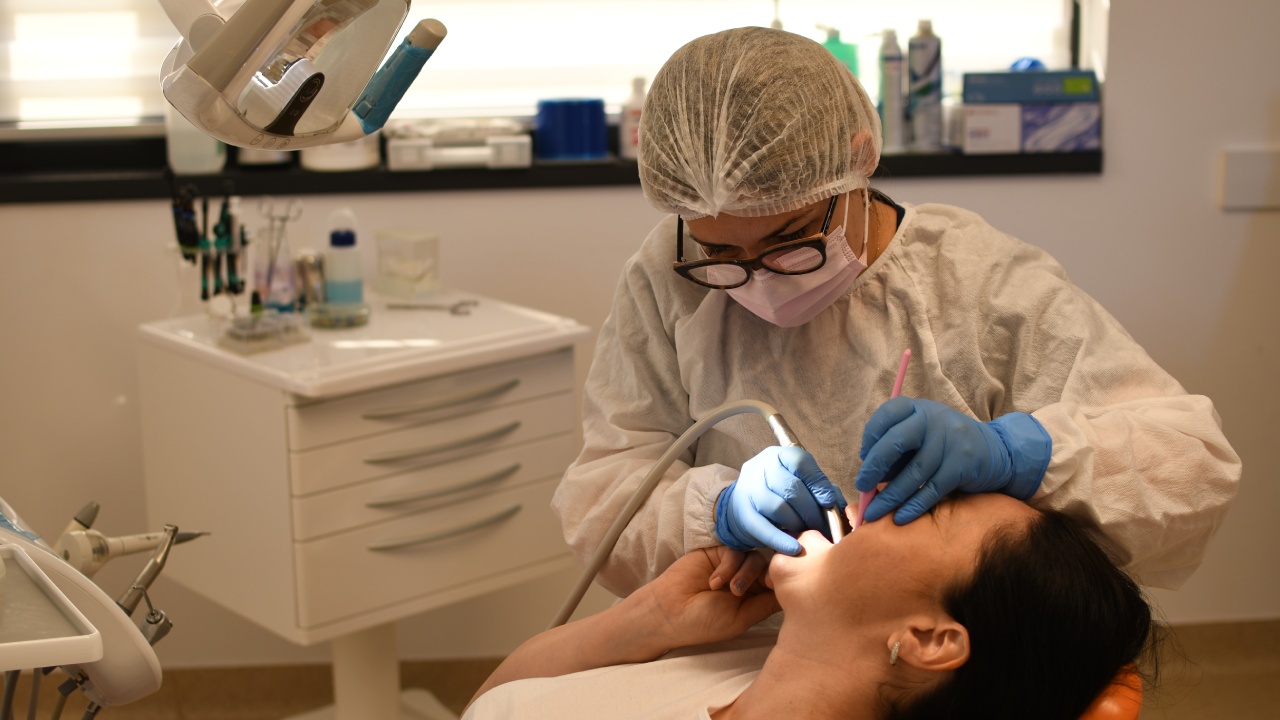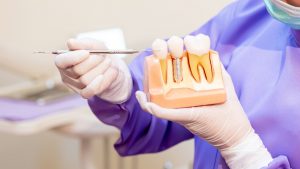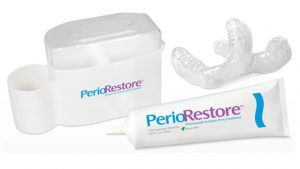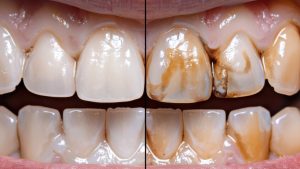Dental deep cleaning is a vital procedure designed to treat and prevent the progression of gum disease. Unlike regular teeth cleaning, which focuses primarily on removing tartar and surface plaque, deep cleaning, also known as scaling and root planing, targets the buildup below the gum line. This comprehensive cleaning process helps to remove plaque, tartar, and bacteria that can cause gum inflammation and infection.
One common question many patients ask when considering deep cleaning is, “How long does deep cleaning take?” This is an important consideration, as the duration of the treatment can vary depending on several factors. In the following sections, we will address this question in detail, helping you understand the process and what to expect during your deep cleaning appointment.
When Is Deep Cleaning Needed?
Deep cleaning becomes necessary when plaque and tartar have accumulated beneath the gum line and have led to gum disease, also known as periodontal disease. Some common signs that you may need deep cleaning include:
- Gum bleeding when brushing or flossing
- Persistent bad breath or a bad taste in the mouth
- Swollen or tender gums that appear red or inflamed
- Receding gums or pockets forming between the gums and teeth
- Loose teeth or shifting in the alignment of teeth
These symptoms often indicate the presence of gingivitis or more advanced gum disease, where plaque has hardened into tartar and is now affecting the deeper layers of the gums and tooth roots.
Differences Between Regular Cleaning and Deep Cleaning
While both regular cleaning and deep cleaning involve the removal of plaque and tartar, they differ in depth, technique, and purpose:
Regular Cleaning:
Also called prophylaxis cleaning, this procedure is performed during routine dental check-ups. It focuses on the removal of plaque and tartar from the visible surfaces of the teeth above the gum line. Regular cleaning is typically recommended every six months for most patients and is ideal for maintaining good oral hygiene.
Deep Cleaning:
In contrast, deep cleaning addresses the plaque and tartar that have accumulated under the gum line and on the roots of the teeth, where standard cleaning tools cannot reach. Dentists perform this procedure when signs of gum disease are present, requiring a more intensive approach. It often takes longer and may require one or more visits, depending on the severity of the condition.
In short, regular cleaning is part of preventive care, while deep cleaning is a therapeutic treatment aimed at reversing the effects of gum disease.
Factors Affecting the Duration of Deep Cleaning
The length of time required for a deep cleaning procedure can vary depending on several factors. Understanding these factors helps both patients and dental professionals plan for the treatment and manage expectations. Below are the key elements that influence the duration of a deep cleaning session:
1. Severity of Gum Disease (Mild, Moderate, Severe)
The severity of gum disease plays a significant role in determining how long a deep cleaning will take. Gum disease progresses in stages, and the more advanced the condition, the more intensive the cleaning process becomes:
Mild gum disease (Gingivitis):
In its early stages, gum disease may only require light scaling to remove plaque and tartar from the surface of the teeth and just below the gum line. You can typically complete this in a shorter time frame.
Moderate gum disease:
As the condition progresses, tartar and plaque build up more significantly, leading to gum recession and pockets forming between the gums and teeth. In this case, deep cleaning may take longer to remove hardened tartar and to smooth the root surfaces.
Severe gum disease (Periodontitis):
For patients with advanced gum disease, the cleaning process becomes more time-consuming and comprehensive. Severe cases may require several appointments, as the buildup beneath the gum line may be extensive, and the gums may need more intensive treatment to prevent further damage or infection.
2. The Number of Quadrants to Be Treated
The mouth is typically divided into four quadrants: upper right, upper left, lower right, and lower left. The number of quadrants that need treatment directly affects the time it takes to complete a deep cleaning.
- Single quadrant: If only one quadrant of the mouth requires treatment, the procedure will be quicker, usually taking around 30-45 minutes per quadrant.
- Multiple quadrants: In cases where more than one quadrant is affected, the cleaning process will take longer. Depending on the severity, patients may require separate visits to treat different quadrants to minimize discomfort and ensure thorough treatment.
3. Patient’s Individual Dental Condition
Every patient’s dental condition is unique, and factors like the amount of plaque and tartar buildup can impact the duration of the procedure. For instance:
Heavy plaque and tartar buildup:
If there is a significant accumulation of plaque and tartar, especially beneath the gum line, it will take more time to thoroughly clean each tooth and root. This is particularly true for patients who have not had regular cleanings or have neglected their oral health for an extended period.
Oral hygiene habits:
Patients who maintain good oral hygiene, even with the presence of gum disease, may require less time for deep cleaning, as the buildup will be less extensive compared to patients with poor oral hygiene.
4. Presence of Other Oral Health Issues
Other underlying oral health issues can affect the duration of a deep cleaning procedure. Conditions such as:
Tooth decay or cavities:
If you have areas of decay or cavities alongside gum disease, your dentist will need to provide additional care to address those areas, which could extend the cleaning time.
Abscesses or infections:
If the patient has active gum infections or abscesses, the dentist may need to take extra steps to treat or manage these issues before proceeding with the deep cleaning, potentially requiring additional time or visits.
Overall, the time it takes for a deep cleaning depends on the unique circumstances of each patient. For some, the procedure may be relatively quick, while others may require multiple visits or a more intensive approach to address the full extent of their gum disease and oral health concerns.
How Long Does Recovery Take After Deep Cleaning?

After undergoing a deep cleaning procedure, patients may experience some discomfort and sensitivity as part of the healing process. The recovery time varies depending on the individual’s oral health and the extent of the deep cleaning. Here’s what you can expect during your recovery period and tips for ensuring a smooth and speedy healing process.
What to Expect Post-Treatment (Soreness, Sensitivity)
It’s common to experience some soreness or tenderness in the gums after a deep cleaning, especially if the procedure was performed on multiple quadrants or in cases of advanced gum disease. Some patients may also experience tooth sensitivity, particularly to hot, cold, or sweet foods. These sensations are temporary and should gradually subside over a few days to a week.
Additional symptoms may include:
- Gum bleeding: Light bleeding when brushing or flossing is normal in the first few days after the procedure.
- Swollen gums: Your gums may appear swollen or slightly red as they heal, especially if the deep cleaning treated gum disease.
- Mild discomfort: You may also experience mild discomfort or a feeling of tightness around the gums, but you can usually manage this with over-the-counter pain relief, as your dentist recommends.
Time to Expect Full Recovery and Gum Healing
The recovery time after deep cleaning can vary from person to person, but here’s a general timeline of what you can expect:
Initial recovery (first 1-3 days):
During the first few days, you may experience the most discomfort, including swelling, soreness, and sensitivity. This is normal, and most patients find that their symptoms begin to improve after a couple of days.
Complete gum healing (1-2 weeks):
Your gums should begin to heal within one to two weeks. Any minor bleeding or swelling should subside by this time, and you’ll likely notice a significant improvement in your comfort levels.
Full recovery (1-2 months):
For full recovery, including the complete healing of gum tissue and reduction of pockets between your gums and teeth, it may take anywhere from one to two months. Your dentist will monitor the healing progress during follow-up visits to ensure your gums are responding well to the treatment.
Most patients can return to their regular routine shortly after the procedure, but following proper aftercare is crucial for achieving the best results. If discomfort or sensitivity persists beyond the expected recovery period, or if you experience unusual pain or signs of infection, be sure to contact your dentist for further guidance.
Conclusion
Deep cleaning is an essential treatment for addressing gum disease and ensuring long-term oral health. While the procedure itself can vary in duration and recovery time depending on individual needs, it provides lasting benefits by reducing the risk of more severe dental issues.
If you’re concerned about your gum health or think you may need deep cleaning, it’s important to consult with a dental professional. At MySmile Dental Care, we are here to provide expert care and support throughout your treatment and recovery process. Reach out to us today to discuss your options and take the first step toward a healthier smile.








